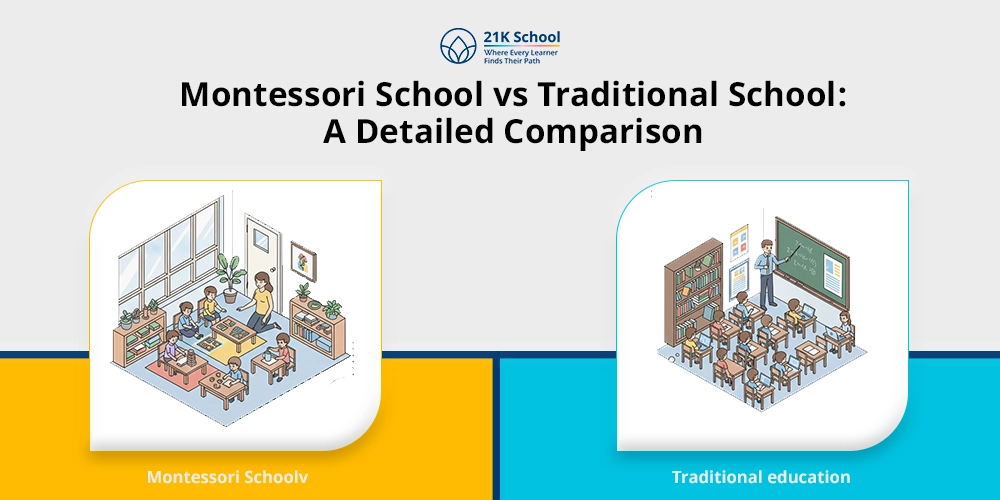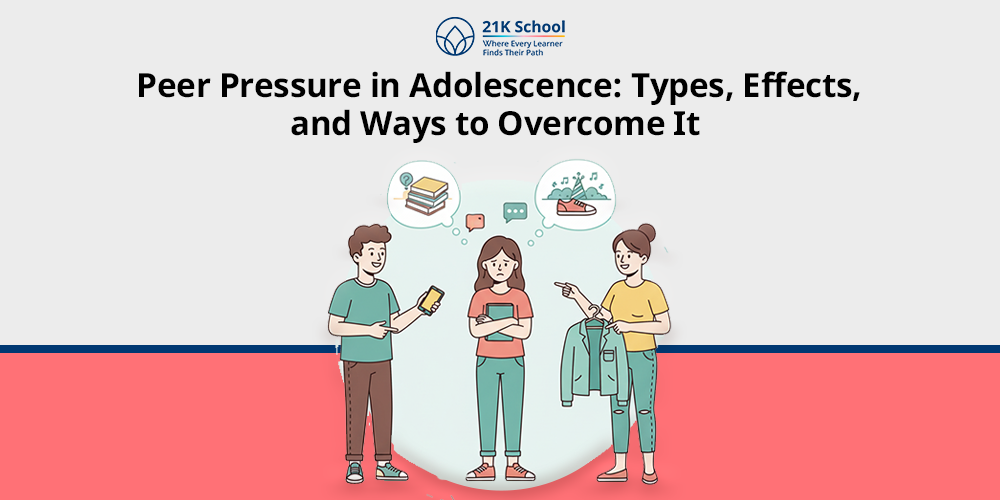
Technology plays an integral role in developing collaboration skills among students. In the 21st century, technology has changed traditional schooling into digital classrooms
Collaboration skills help students to share their knowledge, experiences and ideas, which helps them to effectively promote dynamic education. With the help of technology, collaboration skills allow kids to engage in cooperative learning worldwide.
Collaborative learning has grown in popularity as a result of technological advancements, which helps to break the stereotypes of discrimination and racism.
Schools and educational institutions can use effective strategies to implement collaboration skills in group projects through the use of technology and e-learning platforms
Impact of technology in collaborative learning is more effective and flexible as compared to physical collaborative strategies.
Contents
What is Digital Collaboration?
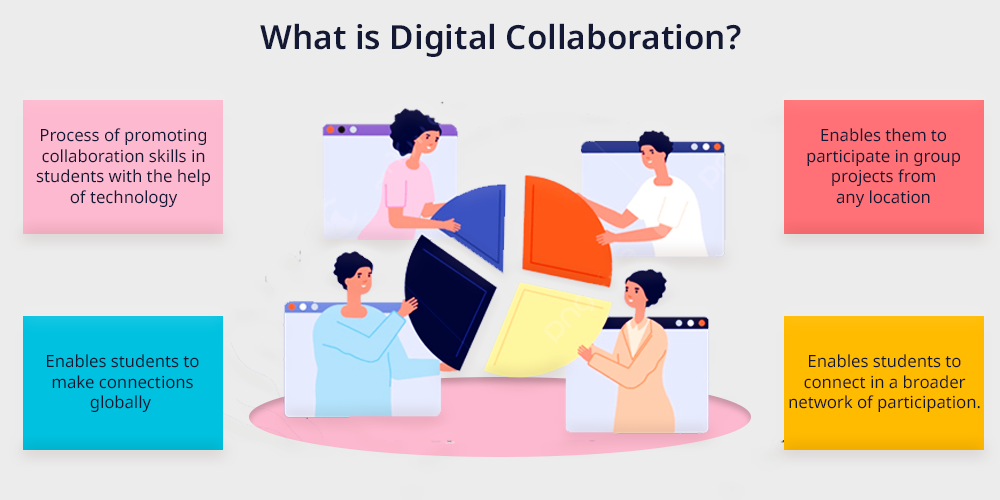
Digital collaboration or technical collaboration is the process of promoting collaboration skills in students with the help of technology and virtual learning platforms
Digital collaboration allows individuals to effectively communicate with others and bond through group projects, without any hindrances with the help of a digital medium.
This enables students to make connections globally and enables them to participate in group projects from any location. Digital collaboration is different from traditional collaboration as this enables them to interact with others and break the limitations of one room.
This method of collaboration skill enables students to connect in a broader network of participation.
Impact of Technology in Collaboration Among Students in Group Projects
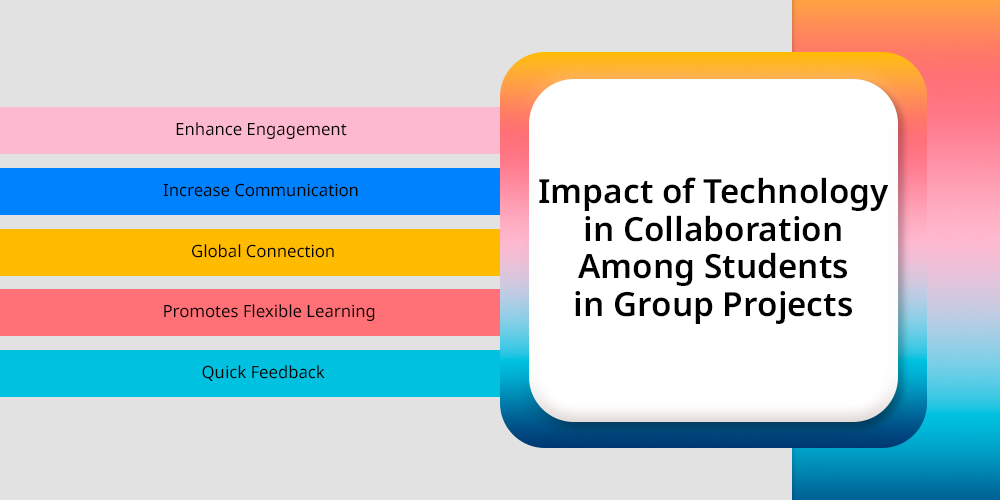
Technology plays an integral role in promoting collaboration among students. Technology enables students to effectively develop social skills with the help of virtual learning platforms.
With technology personalised education has become more common, which allows students to expand their learning outcomes and collaborate with each others according to their needs and style of learning.
Digital collaboration allows students to indulge in group activities remotely from any location, irrespective of any limitations. Here you can check the impact of technology in collaboration.
1. Enhance Engagement
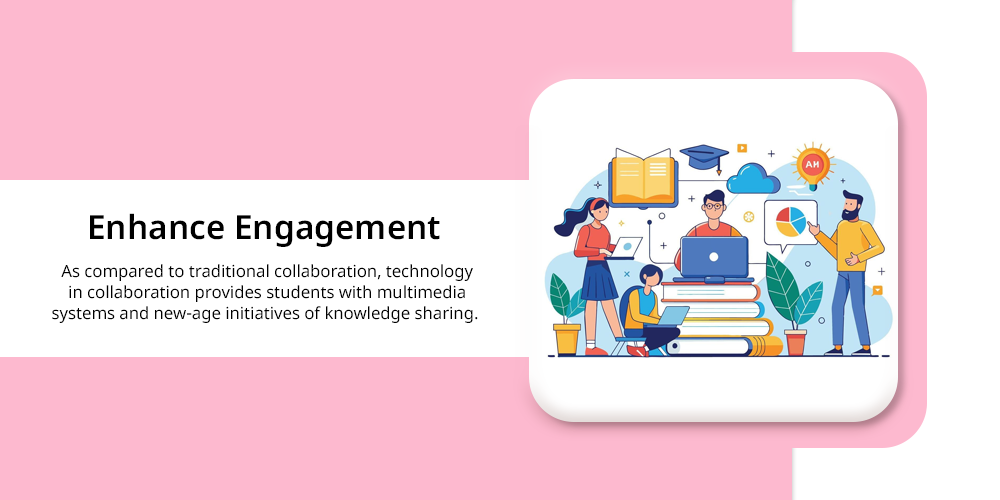
Digital collaboration allows students to enhance their engagement in group projects.
As compared to traditional collaboration, technology in collaboration provides students with multimedia systems and new-age initiatives of knowledge sharing.
This makes students more interested in connecting with others and developing strong relationships.
2. Increase Communication
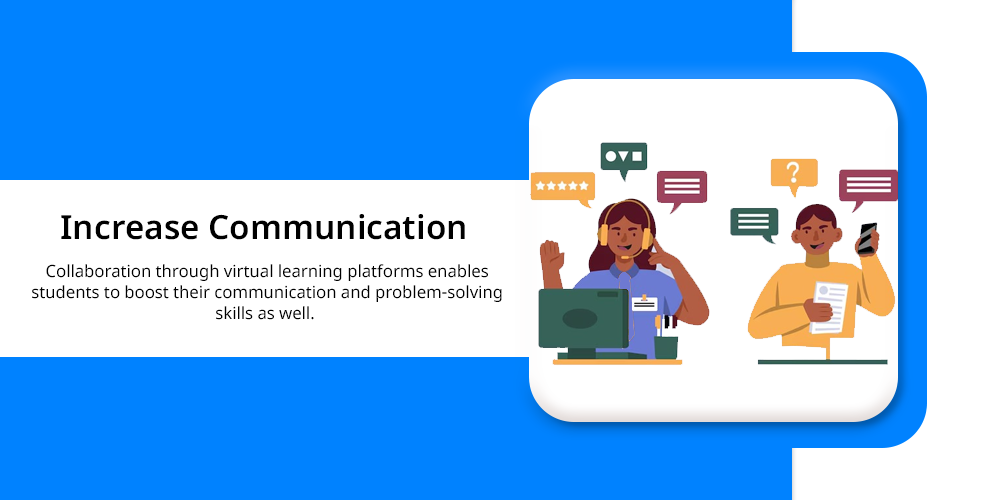
With the help of online group projects, students can confidently communicate with others.
Impact of technology in collaboration allows kids to connect and understand the importance of communication skills and can communicate with others from any part of location more confidently.
Collaboration through virtual learning platforms enables students to boost their communication and problem-solving skills as well.
3. Global Connection
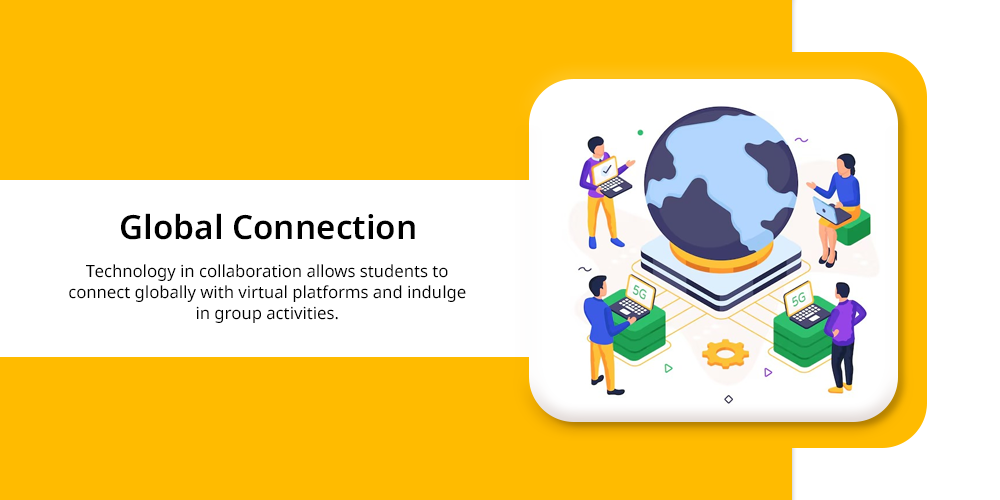
Technology in collaboration allows students to connect globally with virtual platforms and indulge in group activities.
With the help of technology in collaboration, students can connect with any individuals or make their group irrespective of geographical boundaries.
This allows them to connect in real-time and diversify the perspectives of ideas, thoughts, concepts, and knowledge building as well as online group projects
4. Promotes Flexible Learning
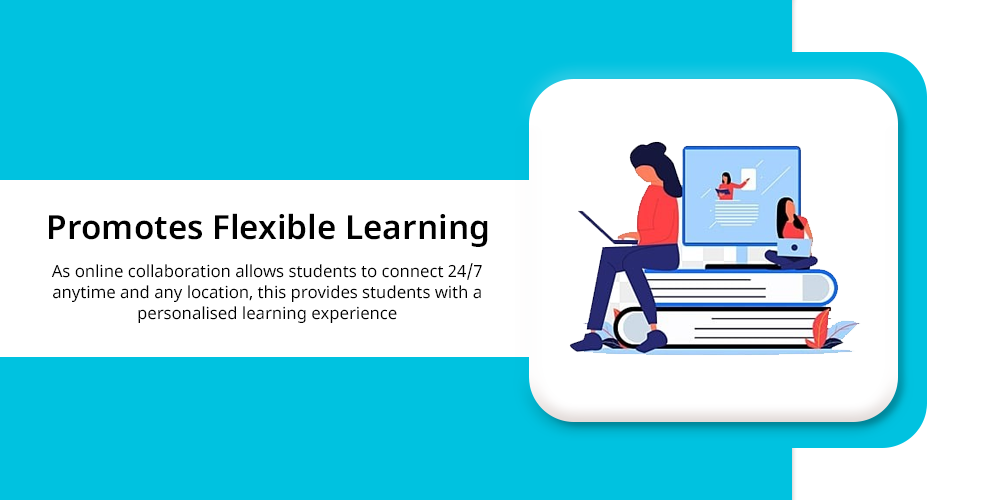
Technology in collaboration helps to provide flexible and personalised aspects of communication.
As online collaboration allows students to connect 24/7 anytime and any location, this provides students with a personalised learning experience and enables them to work cooperatively from any location.
5. Quick Feedback
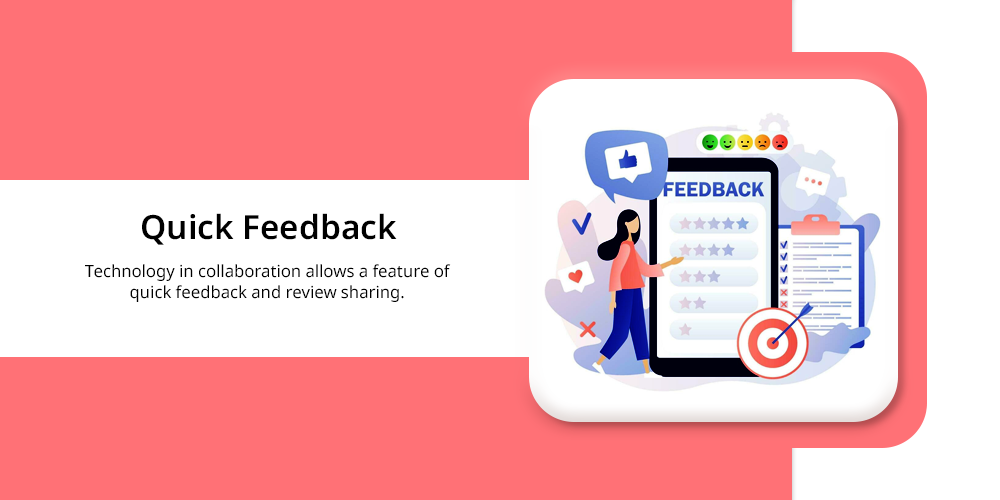
Technology in collaboration allows a feature of quick feedback and review sharing. Feedback is also very important for effective communication and collaboration, which allows individuals to work together and indulge in group activities.
Through technology, it is easy to receive and take feedback quickly for quick solutions. You can also check various formative assessment tools for getting quick feedback.
Benefits of Technical Collaboration in Group Projects
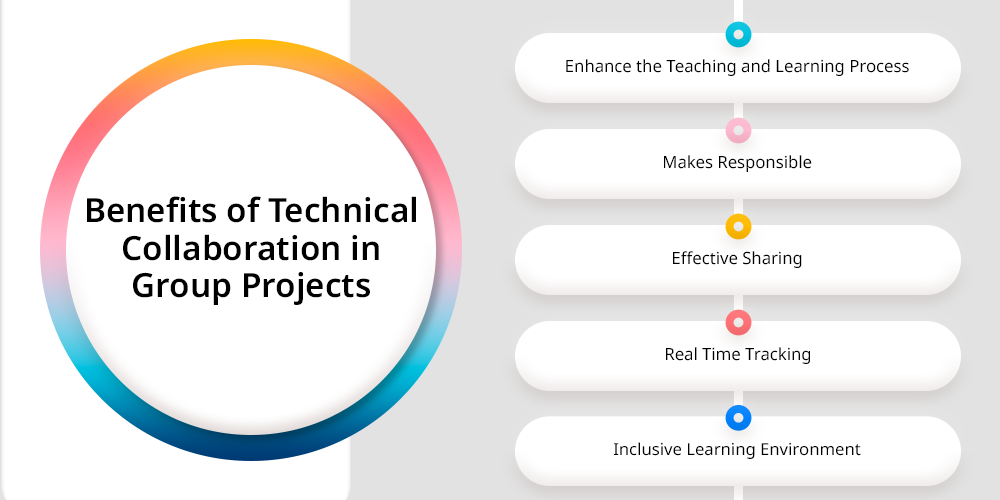
Technical collaboration allows individuals to connect with others with the help of technological devices and the internet.
This allows students to understand the benefits of cooperative learning and engage in group activities through digital platforms.
Collaboration skills make education a fun learning approach and an effective way for skill development. Below, you can check the benefits of collaborative learning in group projects.
1. Enhance the Teaching and Learning Process
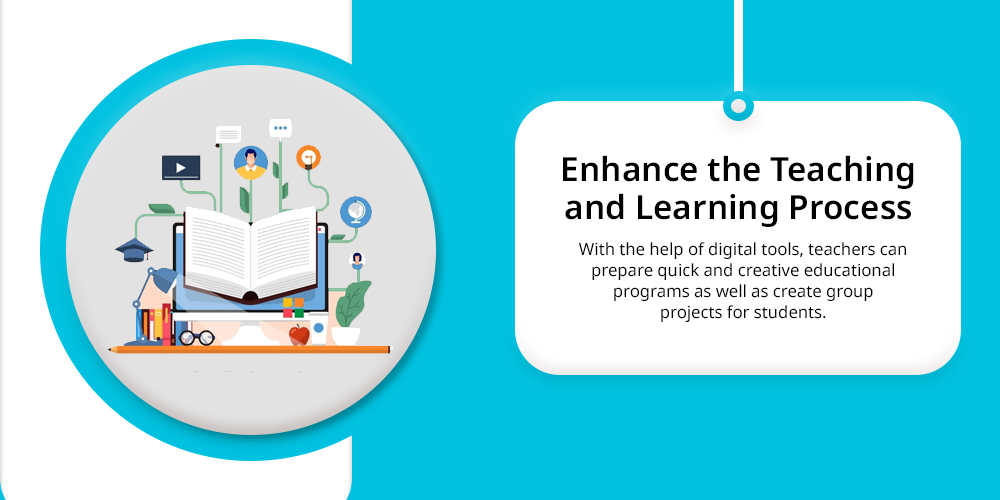
Technical collaboration helps in enhancing the teaching and learning process more efficiently.
With the help of digital tools, teachers can prepare quick and creative educational programs as well as create group projects for students.
This allows students to get personalised learning and participate in group projects through the aid of technology. This allows them to collaborate with each other and make learning easier and more flexible.
2. Makes Responsible
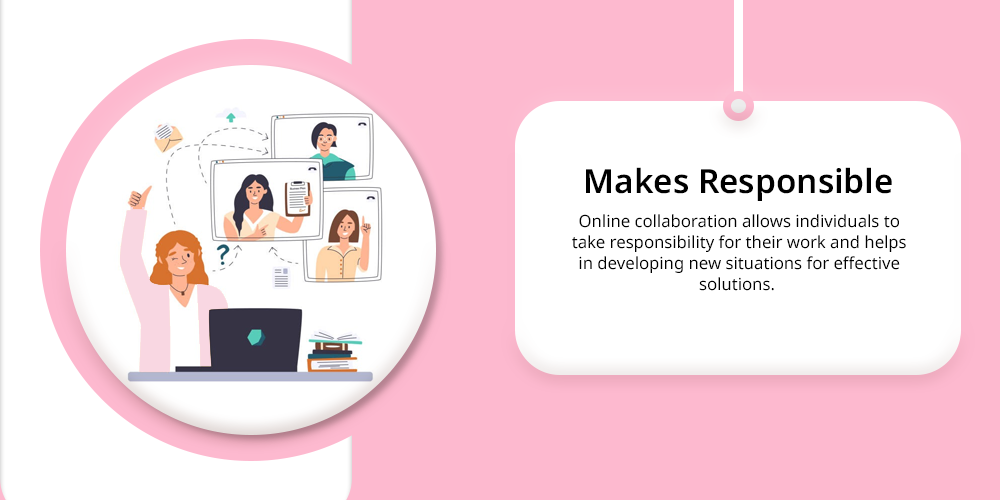
Technical collaboration facilitates clear communication among groups, which enables students and individuals to actively participate in the group projects.
Online collaboration allows individuals to take responsibility for their work and helps in developing new situations for effective solutions.
This makes students take accountability for their projects as well as helps in developing effective groups.
3. Effective Sharing
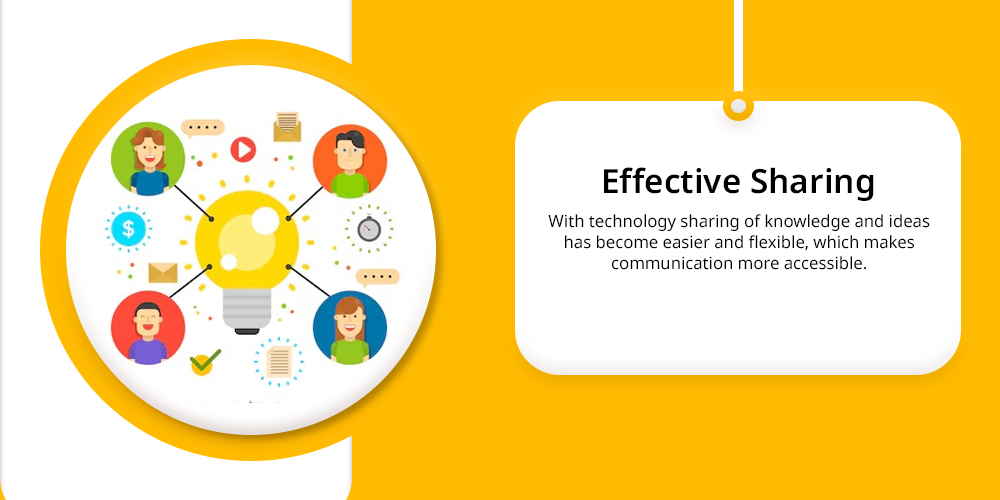
Collaborative learning through online platforms and interactive technologies encourages participation of students in projects and builds a sense of community among students.
By connecting with peers around the world, kids can indulge in group projects, members can raise awareness of various viewpoints and get ready for a connected world.
With technology sharing of knowledge and ideas has become easier and flexible, which makes communication more accessible.
4. Real Time Tracking
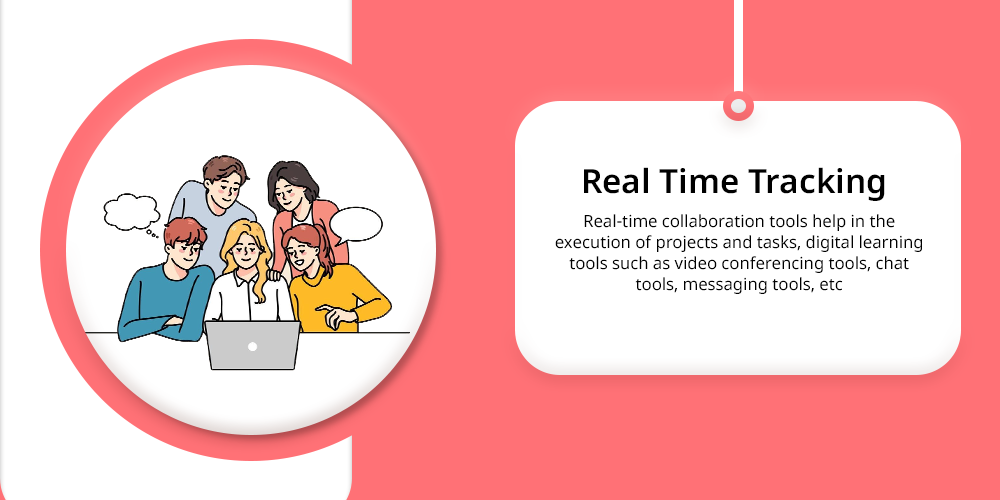
Collaborative learning skills through online platforms provide real-time tracking, through which individuals can monitor each other’s group projects and knowledge retention through virtual learning platforms.
Real-time collaboration tools help in the execution of projects and tasks, digital learning tools such as video conferencing tools, chat tools, messaging tools, etc. Real time tracking helps in enhancing efficiency and productivity through allocating proper resources.
5. Inclusive Learning Environment
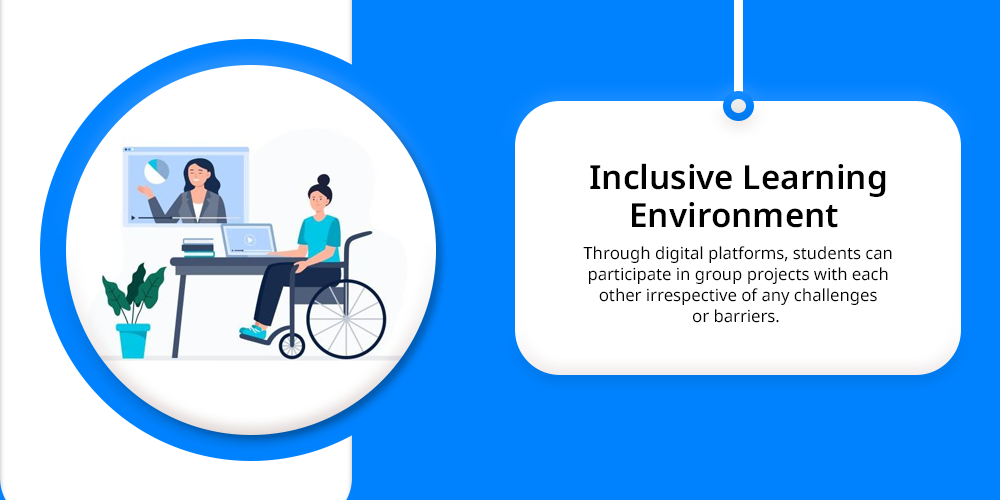
With the help of technology, a collaborative learning environment allows us to promote an inclusive learning environment. Through digital platforms, students can participate in group projects with each other irrespective of any challenges or barriers.
This enables students to share their ideas, thoughts, concepts, knowledge and generate solutions to the projects by collaborating with others in a digital medium.
Challenges of Technical Collaboration in Group Projects
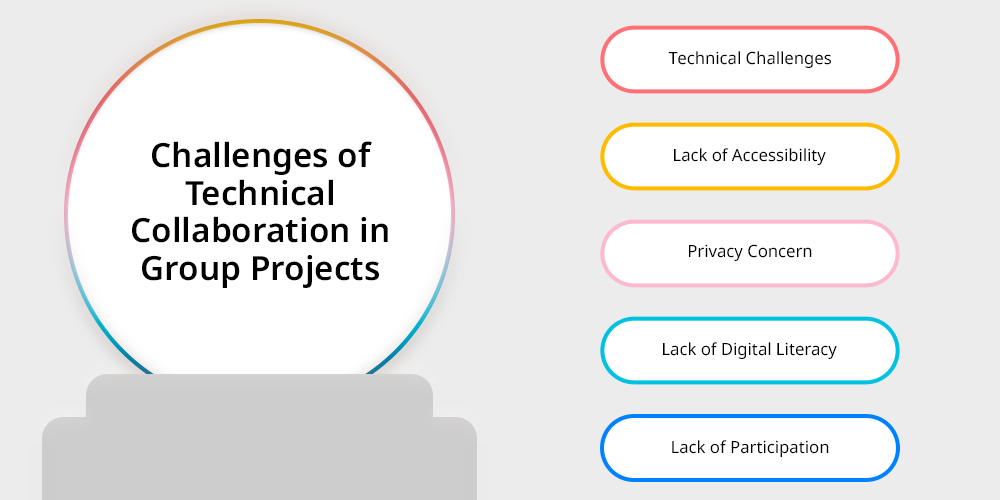
Technical collaboration has lots of benefits and helps in promoting a positive learning environment and equal learning opportunities.
However, along with so many benefits still there are still so many challenges in implementing technology in group projects, due to which it hampers the collaborative process.
Here are the challenges of technical collaboration mentioned below.
1. Technical Challenges
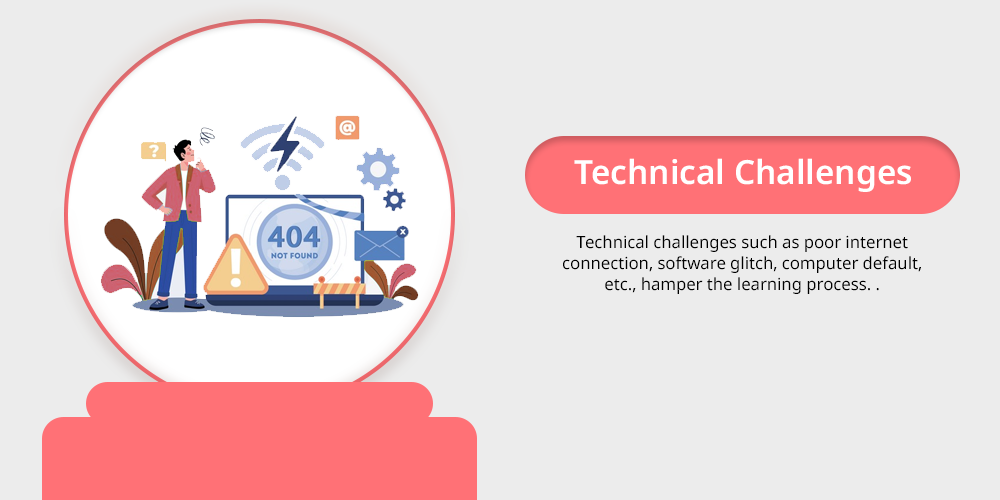
Technical challenges are the most common issue in online collaboration. Technical challenges such as poor internet connection, software glitch, computer default, etc., hamper the learning process.
Due to technical problems, students find it difficult to connect with others and get delayed in their communication process.
2. Lack of Accessibility
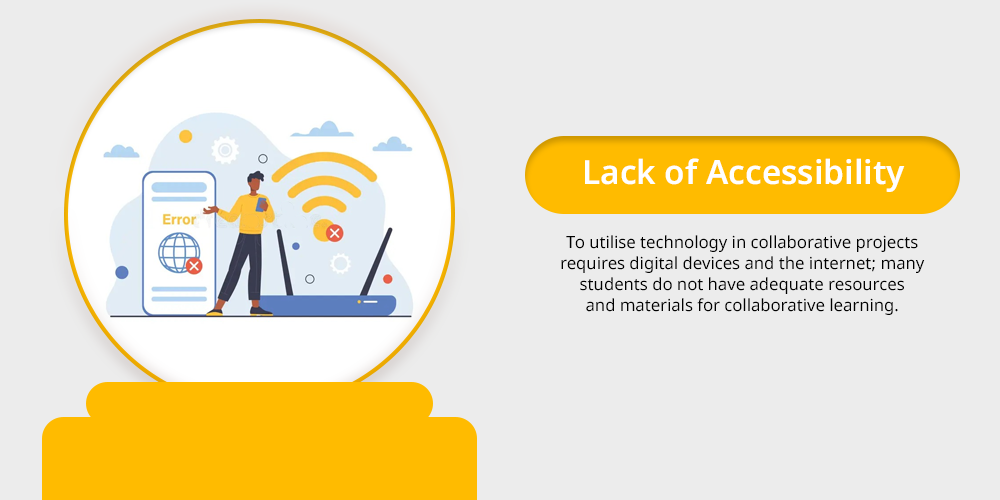
To utilise technology in collaborative projects requires digital devices and the internet; many students do not have adequate resources and materials for collaborative learning.
Due to a lack of accessibility to digital resources, it becomes very tough for them to engage in collaborative learning.
3. Privacy Concern
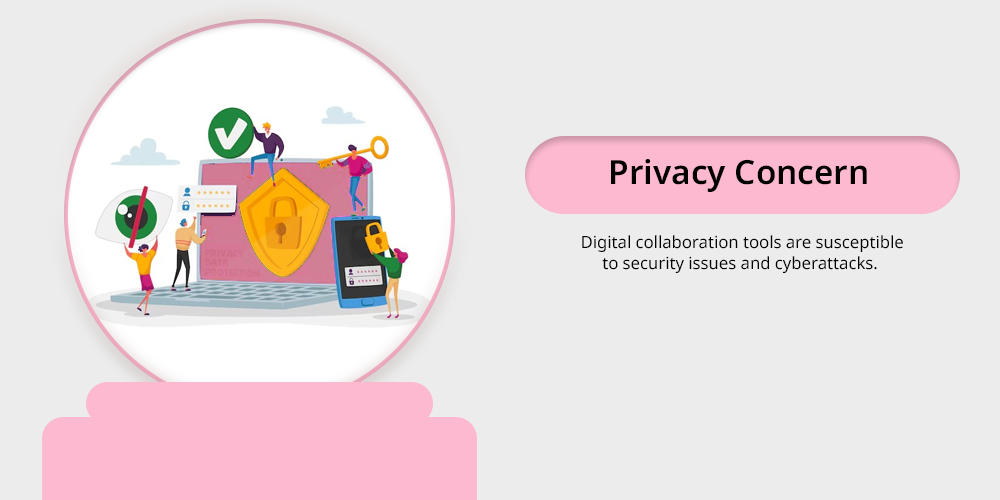
Privacy issues are one of the major challenges in digital collaboration. Digital collaboration tools are susceptible to security issues and cyberattacks.
To protect their information and data, organisations must make sure they have strong security measures in place. Due to privacy concerns, many students do not take part in online group projects
4. Lack of Digital Literacy
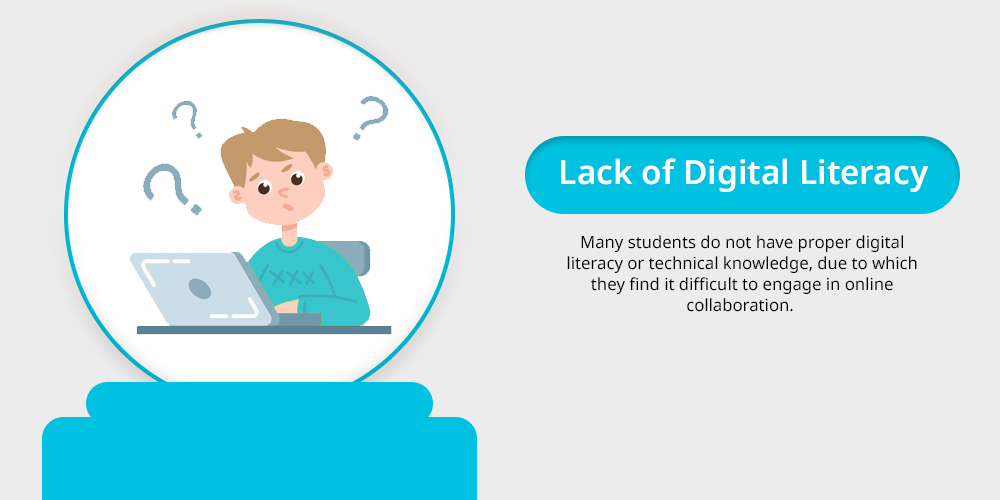
Lack of digital literacy is also one of the major issues of online collaboration.
Many students do not have proper digital literacy or technical knowledge, due to which they find it difficult to engage in online collaboration. To engage in collaborative projects, it is essential to develop digital literacy.
5. Lack of Participation
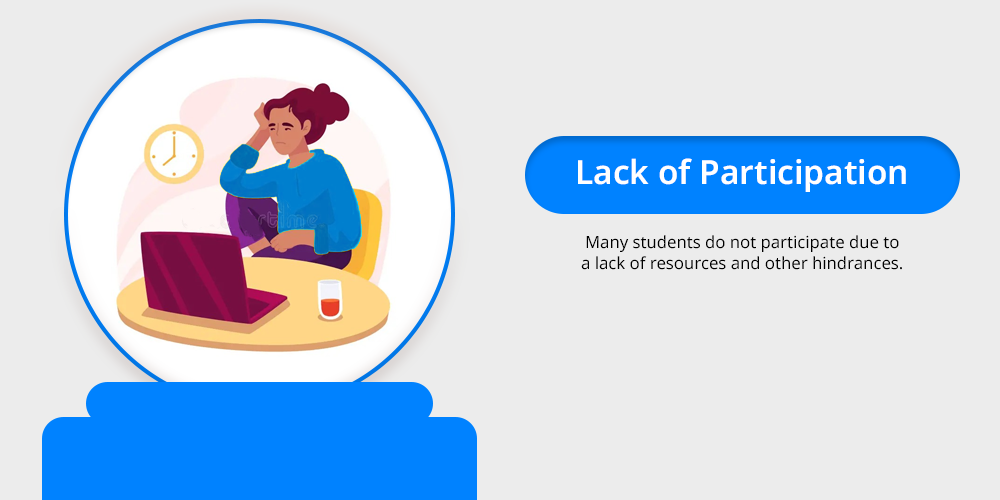
Many students do not want to participate in collaborative activities.
Lack of students’ participation causes major challenges for implementing technical collaboration. Many students do not participate due to a lack of resources and other hindrances.
Conclusion
Students’ collaboration is greatly improved by technology because it makes communication, engagement and international connections easier.
The educational process is ultimately enhanced by the flexible learning environments that digital collaboration tools foster, which encourage inclusivity and real-time feedback.
Although obstacles like accessibility and technical difficulties still exist, there is no denying the advantages of using technology to promote teamwork.
Effective teaching techniques can help teachers give students the teamwork skills they need to succeed in an increasingly connected world and improve their academic performance.
Education that places a strong emphasis on teamwork is essential to producing well-rounded people who can successfully negotiate the challenges of contemporary society.

